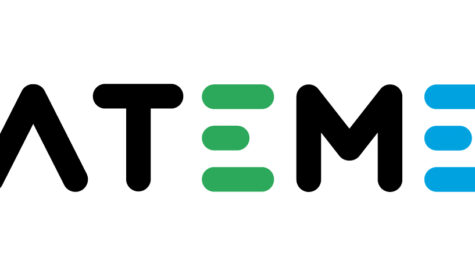Advertising: US TV’s point of no return
This year marks the beginning of the end for the traditional advertising supported linear TV ad market in the US.
This year marks the beginning of the end for the traditional linear TV ad market in the US.
The US is the largest global advertising market by absolute size and per capita ad revenue: in 2022, this measure passed the US$1,000 milestone. The year saw a marked slowdown in growth compared with 2021 across all media, as the double-digit recovery (26% growth over 2022) could not have carried into 2022. In addition, 2H22, and particularly 4Q22, saw a new set of macroeconomic challenges and uncertainties impeding ad revenue growth. But not all segments and market participants were affected equally.
An influx of political advertising contributed to 4.2% annual growth in traditional linear TV; however, excluding major sports events and political advertising, this segment experienced a decline of 1.3% over 2022.
The combined market share of Google, Amazon, Meta, and Apple (GAMA) stood at 46.9%. Newcomer TikTok challenged YouTube and Meta, rapidly carving out a significant share of the mobile video ad market and absorbing most of the growth of that segment. Meanwhile, Amazon and other retail media continued to chip away at Google’s share of the paid search market.

Traditional linear TV decline
In 2022, traditional linear TV advertising briefly returned to 2019’s pre-pandemic revenue level. However, in 2022, the Olympics and midterm elections buoyed this market. Core ad revenue (excluding major sporting events and political ads) has, in fact, barely increased over 2020. During the last two quarters of 2022, the decline in quarterly revenue accelerated compared with 2021, and we expect this to extend into 1H23.
Omdia believes that traditional linear TV advertising will not truly recover from this macroeconomic downturn. In the last five years, ratings decline has outpaced a decline in ad revenue for national networks. Yet shrinking audiences and an impending change in TV currency and omnichannel measurement practices will eventually cause a market correction.
As core advertising revenue declines, the swings from ad spend associated with cyclical events will become more pronounced at the market and individual network levels. Omdia expects ad revenue from marquee sports events such as the Olympics and the Super Bowl to continue attracting stable ad spend levels despite shrinking audiences. Meanwhile, US political ad spend has continued to rise with each election cycle, with the recent midterm elections uncharacteristically generating higher ad spend than preceding presidential elections. This trend will persist, and local TV stations will continue to secure a disproportionate amount of political ad spend, contributing to the cyclicality of the overall traditional TV ad market.
Meanwhile, premium online video (AVOD and FAST) will largely offset declines in traditional linear TV, ensuring that “new total TV” advertising remains flat, at least on the macro level, if not for each broadcaster or channel group.
Broadcasters pivot to streaming
Direct-to-consumer platforms will allow major broadcasters to retain ad spend as it shifts from traditional linear TV to digital formats. Disney leads the conversion to the digital-first ad business: Omdia estimates that in 2022, online platforms accounted for 37% of the group’s advertising revenue – more than the flagship ABC network. This share will rise to more than 50% by 2028, with growth for Hulu and Disney+ offsetting declines in traditional TV revenue.
We expect that within the next five years, digital platforms will overtake their sister flagship linear networks (NBC, CBS, and Fox), but the total traditional linear business (inclusive of cable channels and local TV stations) will still account for a bigger share of advertising revenue for these corporations.
This rapid transformation of the broadcaster business means they urgently need to develop omnichannel ad tech and measurement solutions. Although Nielsen regained measurement accreditation, major broadcast groups are all experimenting with alternative currencies. NBCU partnered with iSpot and has independently evaluated and “certified” a number of other currencies. Similarly, Paramount has partnered VideoAmp, while Disney has a longstanding relationship with Samba TV. Although broadcasters urgently need solutions to enable omnichannel ad sales, targeting, and attribution, the lack of industry consensus risks eroding ad pricing as ad buyers leverage the situation to demand discounts.
YouTube doubles down on CTV
 Digital advertising growth in 2022 has significantly slowed compared with 2021, as many of the digital market segments matured and as a result of macroeconomic headwinds. Within the next five years, we expect cyclical events to have a more pronounced effect on the online advertising market as core online market revenue growth drops to low single digits. Online video, particularly CTV advertising, will continue to grow faster than the rest of the advertising market during this timeframe.
Digital advertising growth in 2022 has significantly slowed compared with 2021, as many of the digital market segments matured and as a result of macroeconomic headwinds. Within the next five years, we expect cyclical events to have a more pronounced effect on the online advertising market as core online market revenue growth drops to low single digits. Online video, particularly CTV advertising, will continue to grow faster than the rest of the advertising market during this timeframe.
Although advertising giants Google and Meta are and will remain the dominant force in the US ad market in the foreseeable future, the duopoly experienced rapid growth deceleration in 2022 across most of their advertising business lines.
- Since 2018, these two companies have grown the overall advertising market by enabling millions of small-to-medium enterprise (SME) advertisers to buy ads efficiently on a simple, self-service basis through their digital ad-buying tools.
- However, we are now seeing the proliferation of rival digital platforms that are just as accessible to SME advertisers, such as TikTok, Amazon, and the self-service tools of traditional media companies like NBCU’s Peacock Ad Manager.
- At the same time, the SME segment can react to macroeconomic challenges much more quickly than big ad buyers, which decelerated Google’s and Meta’s growth in 2022.
Google continues to dominate paid search, but Amazon and the broader emergent retail media segment are chipping away at its market share in this segment. Omdia expects retail media to grow even more competitive over time and become a key driver of growth for the search and nonvideo display segments.
Although the online video advertising market saw a significant slowdown in 2022, this format will grow faster than the rest of the advertising market over the next five years. TikTok has made a serious dent in Google’s and Meta’s dominance of mobile video ads and will continue to rapidly gain market share as both Meta’s and Google’s revenue in this segment stagnate.
In response, Google will focus more on the CTV segment of the market: YouTube is its main platform here, but its recent introduction of FAST channelson Google/Android TV is a further shift in this direction. This will increasingly bring Google into direct competition with broadcasters, other premium online video services, and CTV manufacturers. With accelerated migration of TV budgets to digital and intensified competition in the CTV space, the US TV industry is on a path to a complete transformation.
Marija Masalskis is Senior Principal Analyst – TV, video & Advertising, Omdia.




